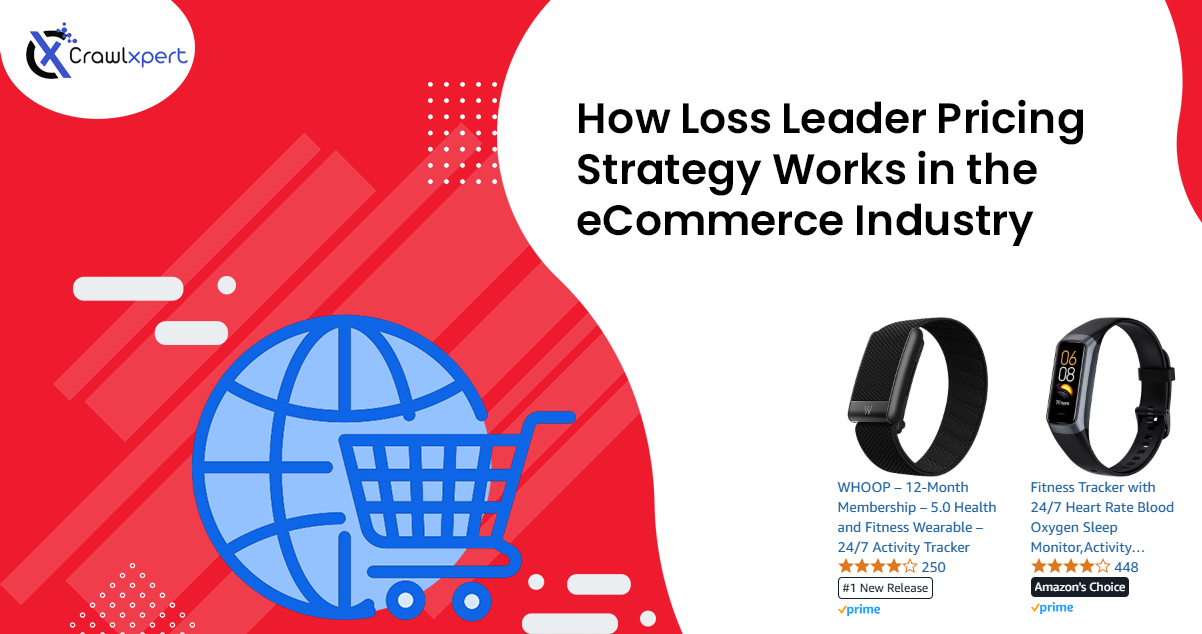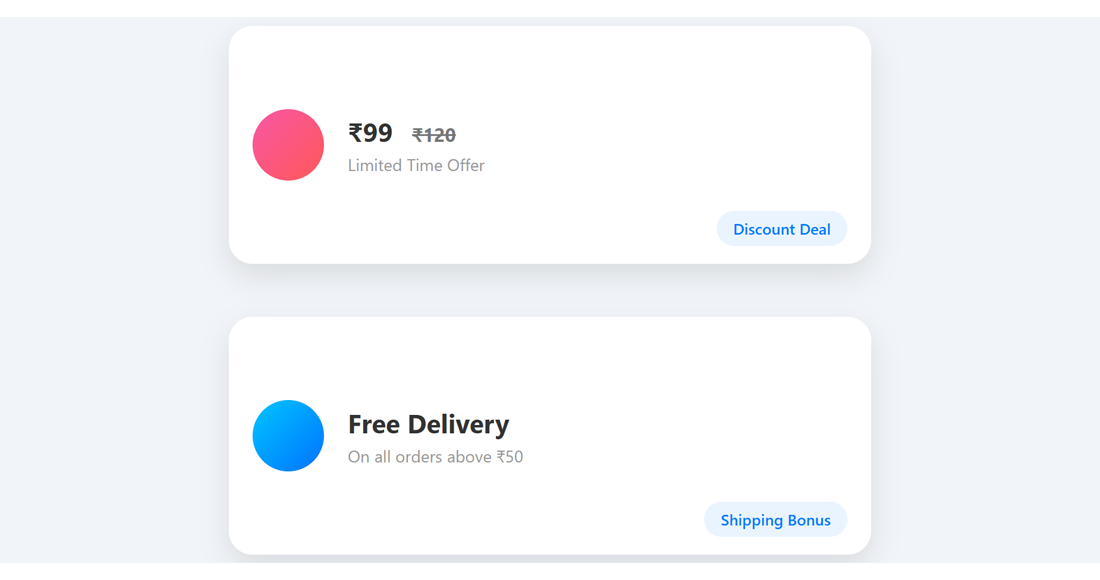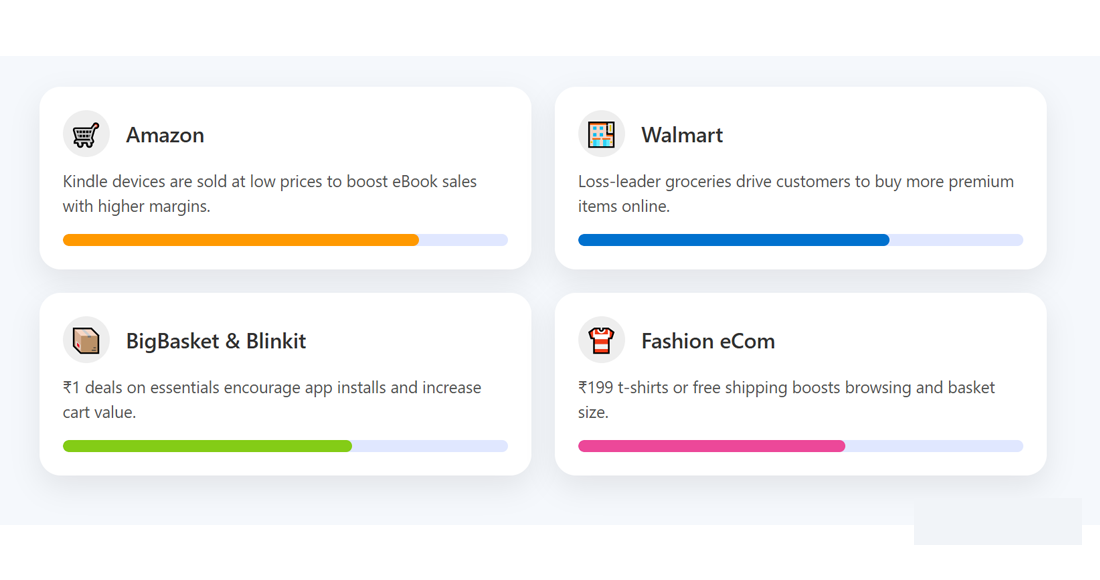
How Loss Leader Pricing Strategy Works in the eCommerce Industry
Published on October 1, 2025
In the highly competitive e-commerce industry, businesses constantly seek innovative pricing strategies to attract customers, increase order value, and build long-term loyalty. One such strategic approach is the Loss Leader Pricing Strategy, where select products are intentionally sold at a loss to drive traffic and encourage broader purchases.
While this concept might seem counterintuitive at first, it has been successfully used by global retail giants like Amazon, Walmart, and Flipkart to dominate their markets. In this blog, we’ll explore how the loss leader pricing strategy works in eCommerce, why it’s effective, examples of it in action, and how your business can apply it smartly to stay competitive and profitable.
1. What Is Loss Leader Pricing?
A loss leader is a product sold at a price below its market cost or margin, often at a loss, to attract new customers or encourage repeat purchases.
The Core Idea:
Attract buyers with a “can’t-resist” low-price product, and then upsell or cross-sell higher-margin items in the same cart or during future visits.
2. Why Use Loss Leader Pricing in eCommerce?
- Traffic Driver: Heavily discounted products boost website traffic. With digital advertising becoming more expensive, loss leaders offer organic and conversion-friendly traffic sources.
- Boost Average Order Value (AOV): When a consumer comes in for a low-cost item, they’re more likely to buy additional items, often full-priced. This increases the total order size.
- Inventory Clearance: It’s an effective way to move slow-moving inventory by bundling or promoting it as a loss leader.
- Customer Acquisition: New customers are drawn in by irresistible prices. Once they’re in your ecosystem, you can market repeatedly, increasing Customer Lifetime Value (CLTV).
- Competitive Advantage: In high-competition verticals (like electronics or groceries), loss leader pricing helps undercut competitors and win first-time buyers.
3. How It Works in eCommerce: Step-by-Step
Step 1: Identify High-Volume, Low-Cost Items
Look for SKUs that are:
- Popular
- Frequently searched
- Associated with essential or daily use
- Easy to upsell with complementary items
Example: Offer diapers at a loss and upsell baby wipes, creams, and clothes.
Step 2: Set Below-Margin Pricing

Adjust pricing for the target product below market rate—even if it means making a small loss on each sale.
Example: Sell a ₹120 product for ₹99 with free delivery.
Step 3: Cross-Sell and Upsell on Product & Cart Pages
Use “Frequently Bought Together” and “You May Also Like” sections to recommend:
- Premium alternatives
- Accessories
- Subscription products
Step 4: Use Email & Retargeting
Once a customer makes a purchase:
- Retarget them with full-priced items
- Offer loyalty rewards
- Encourage subscription programs
Step 5: Analyze ROI
Loss leader pricing must be closely monitored. Consider:
- Gross profit per order
- New customer acquisition cost (CAC)
- Return rate of the product
- Upsell/cross-sell conversion

4. Real-World Examples of Loss Leader Strategy
- Amazon: Amazon frequently sells electronics and books below cost. The Kindle e-reader is often priced low to drive sales of eBooks, where margins are significantly higher.
- Walmart: Walmart offers deep discounts on groceries and household essentials online. These attract price-sensitive consumers who often end up buying premium goods too.
- BigBasket & Blinkit: In India, grocery delivery apps run massive ₹1 deals (e.g., ₹1 for a pack of sugar). These create FOMO, increase app installs, and lead to larger basket sizes.
- Fashion eCommerce: Online fashion retailers may offer ₹199 t-shirts or free shipping on ₹500 orders, knowing consumers often browse and buy multiple items, pushing total cart value up.
5. Benefits of Loss Leader Pricing in eCommerce
| Benefit | Description |
|---|---|
| Attracts New Customers | A proven way to get new users to try your platform |
| Increases Cart Size | Shoppers rarely buy just one item, especially when offered deals |
| Improves CLTV | With proper remarketing, customers return for profitable purchases |
| Clears Inventory | Helps move old stock that’s tying up capital |
| Competitive Differentiation | Especially in price-sensitive markets |
6. Risks and How to Manage Them
| Risk | Mitigation Strategy |
|---|---|
| Profit Margin Erosion | Set daily or inventory-based purchase limits on loss leaders |
| Repeat Abuse by Deal Hunters | Use customer tagging and limit reorders |
| Brand Perception as Cheap | Use smart bundling, avoid degrading flagship products |
| Inventory Mismanagement | Track real-time sales data and automate reorder triggers |
7. Tools to Implement Loss Leader Pricing in eCommerce
- eCommerce Platform Support: Use platforms like Shopify, WooCommerce, or Magento with dynamic pricing apps.
- Pricing Engines: Automate pricing with tools like Prisync, Omnia Retail, RepricerExpress.
- Recommendation Engines: Upsell with Amazon Personalize, Vue.ai, Nosto.
- Analytics Tools: Track strategy ROI using Google Analytics, Mixpanel, Power BI, or Tableau.
8. Best Practices for eCommerce Loss Leaders
- Bundle Smartly: Include one loss leader with high-margin items in a combo pack.
- Time Your Offers: Use during holidays, clearance sales, or launch campaigns.
- Use Countdown Timers: Create urgency to increase conversion rates.
- Leverage Subscriptions: Offer discounts on the first order to convert customers into subscribers.
- Cap Purchases: Limit quantities per customer to avoid bulk abuse.
9. Is Loss Leader Pricing Right for You?
Yes, if you:
- Have strong upsell opportunities
- Are entering a competitive market
- Sell fast-moving, essential goods
- Have a high customer retention strategy
No, if you:
- Have razor-thin margins overall
- Sell only one product or rely on a single SKU
- Struggle with logistics and fulfillment capacity
10. Conclusion
Loss leader pricing in eCommerce is not about losing money—it’s about making strategic sacrifices to drive customer acquisition, build trust, and unlock long-term profit.
If executed with careful planning and monitoring, this pricing strategy can:
- Grow your customer base quickly
- Improve inventory turnover
- Increase overall order values
- Strengthen brand competitiveness
Remember: It’s not just what you lose on the lead item—it’s what you gain across the entire customer journey.

